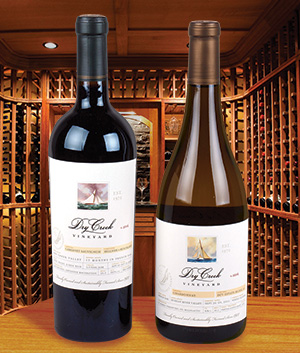 Come Sail Away
Come Sail Away
Dry Creek Vineyard was the first winery established in the Dry Creek Valley after Prohibition. It was founded in 1972 by David Stare, who came with an early vision to plant Sauvignon Blanc. Before his arrival, the valley was little more than a few family farms and prune orchards, but Stare was determined to start a winery inspired by those in the Loire Valley, which led to a viticultural reawakening in northern Sonoma County.
Stare soon began taking winemaking classes at UC Davis. On the weekends, he looked for vineyard land and finally discovered an old prune orchard and began planting vines. Although Sauvignon Blanc beckoned to him, several vineyard specialists advised him against planting it. “They told me Sauvignon Blanc would never grow in the Dry Creek Valley, but I knew I had to stick to what I knew was right. I was going to plant this varietal come hell or high water.” It turned out to be one of his best decisions. Over the last 40 years, the winery has also developed an international reputation for its Fumé Blanc, Dry Chenin Blanc, Chardonnay, Zinfandel, and Bordeaux varietals.
During his long career, Stare has logged many firsts. For instance, he initiated the Dry Creek Valley appellation in 1983 and was the first to label a wine with it. He was the first to release a wine using the descriptor ‘Meritage’ (1985 vintage) on the label to classify his Bordeaux-style blend.
Dry Creek is committed to a healthy and diverse ecosystem for all plants, insects, and animal life, which in turn creates a better place for grapes, with the goal of producing high-quality wines. The winery has 185 acres of vineyards within Dry Creek Valley and Russian River Valley that are 100% Certified Sustainable. While employing many sustainable practices in the vineyard, top priorities include: growing cover crops to rebuild depleted soil; composting to reduce the need for synthetic fertilizers and improve the quality of the soil; beekeeping to enhance the eco-system of the vineyard; encouraging birds of prey to adopt the vineyards to control rodent populations; and improving the local fish and creek habitat for a healthy ecosystem.
Chardonnay 2016
This estate wine was partially whole-cluster pressed, and 90 percent was barrel fermented in French oak, one-quarter new. About half of the wine underwent malolactic. It starts with aromas of baked apple and apricot, cut by minerals and citrus oil. The palate features poached pear, meyer lemon and pineapple, with good balance between fruit, barrel oak, and acid.
Cabernet Sauvignon 2016
This smooth and easy-sipping red is mostly Cabernet Sauvignon, with small amounts of Merlot, Petit Verdot, Cabernet Franc, and Malbec. There are hints of bell pepper and sweet fruit on the nose. The palate showcases black currant, blackberry, and cranberry. The full body is fruit forward, with juicy chewy tannins and a peppery finish. The mouth feel is even and full with no harshness.
Here’s a look at Dry Creek Vineyard Fumé Blanc and Merlot:
https://winervana.com/dry-creek-vineyard/
https://www.drycreekvineyard.com/
Top of page: https://winervana.com/blog/
